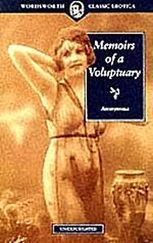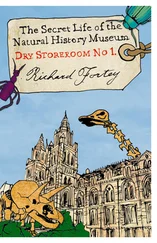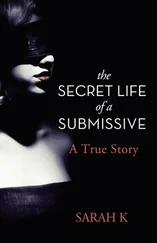In sharp contrast to Marilyn’s on-set conduct with her repeated delays in arriving on the set and the now legendary demands for retakes was the professionalism of Montgomery Clift, who memorized the entire script before arriving on location in Nevada. As Miller notes in his autobiography, “Indeed, [Clift] never missed an hour’s work… and was always on time despite the long delays in finishing the picture.” Gable also exhibited extreme empathy for Marilyn, but was clearly frustrated at the situation. He took out his frustration by insisting on doing his own dangerous stunt work.
By this time, of course, Natasha Lytess was long gone and now replaced by Marilyn’s other guru, Paula Strasberg. Marilyn wouldn’t so much as make a move on camera without Paula’s consent. However, there was a big difference in their relationship as compared to that with Natasha. Paula had a husband and children. She had other responsibilities. Natasha only had Marilyn. Whereas Natasha was devoted to keeping Marilyn’s moods from swinging out of control and made sure she was on the right medication in the right doses, Paula just coached her acting. Indeed, without Natasha, Marilyn would fall into great despair during the filming of The Misfits .
By the end of August, Marilyn could take no more. The stress had gotten to her to the point that she began to complain of hearing “voices” again. The drugs were not working, so the dosages were increased. Ralph Greenson prescribed 300 milligrams of the barbiturate Nembutal. The maximum dose was supposed to be 100 milligrams. “Doctors had gone along with her demands for new and stronger sleeping pills,” Arthur Miller later remembered, “even though they knew perfectly well how dangerous this was. There were always new doctors willing to help her into oblivion.”
“He was giving Marilyn three times the dosage she should have been given,” said Rupert Allan (who was on the set every day) of Ralph Greenson. “I found it shocking, just shocking, that any doctor would prescribe that much Nembutal for insomnia. It made her absolutely paranoid in her waking hours. She told me she always felt as if she was being followed. Everything was closing in on her.” Allan recalled Marilyn splitting open Seconal capsules and letting the drug dissolve in her mouth during breaks in filming. “I would say that by this time she was, I’m sorry to say it, a drug addict. That would not be overstating it.” Her makeup artist, Allan Snyder, recalled applying her makeup in the morning while she was still flat on her back in bed. “There was no other way,” he said. “It would take her so long to get up in the morning, we had to start with the makeup before she was out of bed.”
The result of such drug abuse, on top of the desert heat and all of this stress, was that Marilyn was flown to Los Angeles, where she was admitted to Westside Hospital. The press was told that she was suffering from “extreme exhaustion.” That wasn’t the case, though.
“She had a nervous breakdown,” said Evelyn Moriarty, her stand-in on this film. “There was a lot of concern about her health and well-being. She was in bad shape. Some of us didn’t think she would be able to find her way back from it. There was also talk that the whole movie would have to be shut down. All of her friends went to Los Angeles to be with her—Paula [Strasberg], May [Reis, her secretary], ‘Whitey’ [Snyder, her makeup man]. I really thought the movie was over for all of us, and I felt terrible for her. I was very worried. If you knew Marilyn as I did, this kind of thing really made you feel just dreadful. You wanted her to pull out of it, you really did.… You just wanted her to be okay. She was trying so very hard, but the odds were always against her. Every time she took a step forward, something happened to knock her back again.
“Then there were a lot of stories on the set that John Huston had run the budget into the ground with his gambling—he was a terrible gambler!—that he needed time to raise more money, and that the movie was going to be shut down anyway, and that he had convinced doctors to admit Marilyn into the hospital in order to use her as a scapegoat. I now think it was a little of both—that she needed to be hospitalized and that Huston took advantage of her illness so that he could blame the delay in filming on her. I thought that was awful.”
Pat Brennan recalls a visit that Pat Kennedy Lawford paid to Marilyn. “Pat wanted to visit Marilyn but she didn’t want to cause a spectacle by doing it,” Brennan recalled, “so she arranged with the hospital to sneak in after visiting hours and wore a silly black wig and glasses in order to not be recognized.
“She said that when she showed up in Marilyn’s room, she was sound asleep. She remembered Marilyn as being white as a sheet, so much so that for a moment she actually thought she was dead. ‘I had never seen a woman look like that who was not in a casket,’ she told me. She stood at the foot of Marilyn’s bed and just stared at her for ten minutes wondering how in the world it had come to this for her. ‘I knew I was coming in at the end of a long story and was so sorry I had not been around to help her,’ she told me. She said that Marilyn stirred and finally awakened. ‘Then she looked at me,’ Pat remembered, ‘and said, somewhat angrily, “Who the hell are you?” ’ She took off the disguise, and Marilyn burst out laughing. Suddenly, she was Marilyn Monroe again. A glow just came over her, Pat said. Her color returned, her personality returned. Marilyn said, ‘Well, this is the first time you have ever seen me in the hospital, Pat. How do I look?’ Pat said, ‘Marilyn, I swear to God, you look like shit.’ And the two had a good laugh. ‘So, can we get a couple of martinis in here, or what?’ Pat asked.”
“I guess about a week later, she was back on the set,” Evelyn Moriarty recalled, “and you just had to wonder how she ever did it.”
“I had to use my wits,” Marilyn would later explain, “or else I’d have been sunk—and nothing’s going to sink me. Everyone was always pulling at me, tugging at me, as if they wanted a piece of me. It was always, ‘Do this, do that,’ and not just on the job but off, too. God, I’ve tried to stay intact, whole.”
Indeed, as Ralph Roberts put it, “Under all that frailty was still a will of steel.”
Just before filming for the movie moved back to Los Angeles for the final shooting, Marilyn and her coterie of friends, including Paula Strasberg, Ralph Roberts (now also her masseur), and May Reis, went to San Francisco to attend an Ella Fitzgerald concert. While she was there, Marilyn decided to pay a visit to the DiMaggio family. She had always gotten along well with them, even if not so much with Joe toward the end of their marriage. Though Joe was out of town, she had a chance to visit with his brother and sister and, it would seem, rekindled her friendship with them. Maybe it had something to do with the DiMaggios, or maybe not, but as soon as she got back to Los Angeles the fights started again with Arthur Miller. The two argued so loudly at the Beverly Hills Hotel, Marilyn’s friends felt sure that the marriage was over—and this time it really was. Miller soon moved out of the hotel, leaving Marilyn alone there. Now it was just a matter of formal divorce papers being drawn up for the battling couple.
On October 21, Marilyn’s director of Niagara , Henry Hathaway, saw Marilyn on the Paramount soundstage. She was crying. “All my life, I’ve played Marilyn Monroe, Marilyn Monroe, Marilyn Monroe,” she told him. “I’ve tried to do a little better and when I do, I find myself doing an imitation of myself. I so want to do something different. That was one of the things that attracted me to Arthur when he said he was attracted to me. When I married him, one of the fantasies in my mind was that I could get away from Marilyn Monroe through him, and here I find myself back doing the same thing, and I just couldn’t take it. I had to get out of there. I just couldn’t face having to do another scene with Marilyn Monroe.”
Читать дальше












